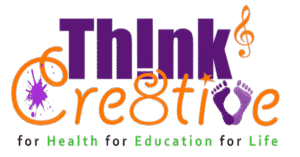Organisation: Think Cre8tive Group CIC
Date Adopted: 1 October 2025
Review Date: 1 October 2026
Responsible Officer: CEO / Quality & Evaluation Lead
1. Purpose of the Framework
The Monitoring and Evaluation (M&E) Framework provides a structured approach to assessing the effectiveness, outcomes, and impact of Think Cre8tive Group CIC programmes. It ensures accountability to funders, transparency with stakeholders, and continuous improvement of services.
The framework supports:
- Evidence-based decision-making.
- Demonstration of outcomes aligned with national priorities (NHS, social prescribing, Arts Council).
- A cycle of learning and improvement across all programmes.
2. Scope
This framework applies to all Think Cre8tive Group CIC programmes, including:
- Singing Club (community wellbeing choirs)
- Care Home Choirs
- Sing It Out Mama (postnatal wellbeing)
- U-Can-Play Ukulele
- Facilitator training and licensing programmes
3. Monitoring & Evaluation Principles
- Proportionality – methods should be suitable for the scale and resources of the programme.
- Participation – participants, staff, and partners are involved in shaping evaluation.
- Inclusivity – tools and processes are accessible and culturally sensitive.
- Ethics & Safeguarding – informed consent is obtained; data is confidential and anonymised.
- Learning-focused – evaluation informs practice and continuous improvement.
4. Key Evaluation Questions
- Are programmes being delivered as intended (fidelity)?
- To what extent are participants experiencing improved wellbeing, connection, and confidence?
- How do programmes contribute to wider health, social, and cultural priorities?
- What improvements or adaptations are needed for future delivery?
5. Data Collection Methods
Quantitative Data
- Attendance registers and demographics.
- Standardised wellbeing measures (e.g. SWEMWBS – Short Warwick-Edinburgh Mental Wellbeing Scale).
- Referrals and retention rates.
Qualitative Data
- Participant feedback surveys.
- Facilitator observations.
- Case studies and personal stories.
- Creative reflection activities (drawing, lyric writing, group check-ins).
6. Indicators
| Level | Indicators |
|---|---|
| Inputs | Number of sessions delivered, staffing levels, volunteer hours, venues used. |
| Outputs | Number of participants engaged, attendance rates, number of referrals. |
| Outcomes | % of participants reporting improved mood, reduced isolation, increased skills. |
| Impact | Long-term improvements in wellbeing, community resilience, healthcare savings. |
